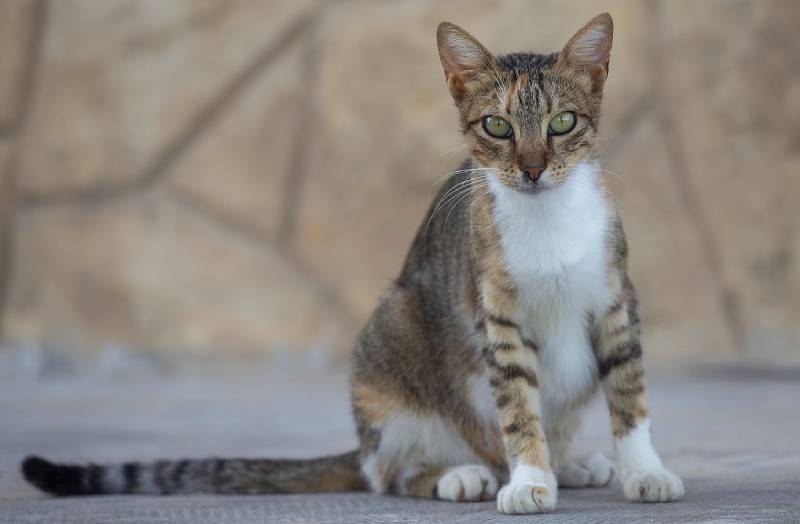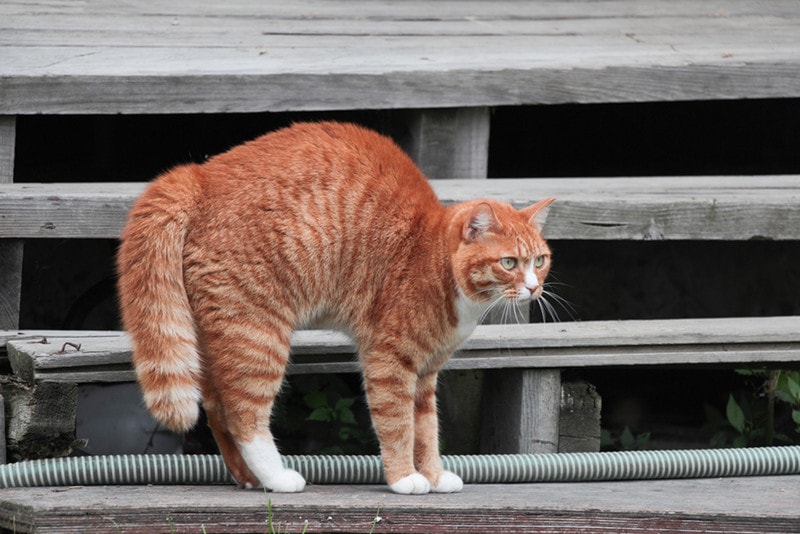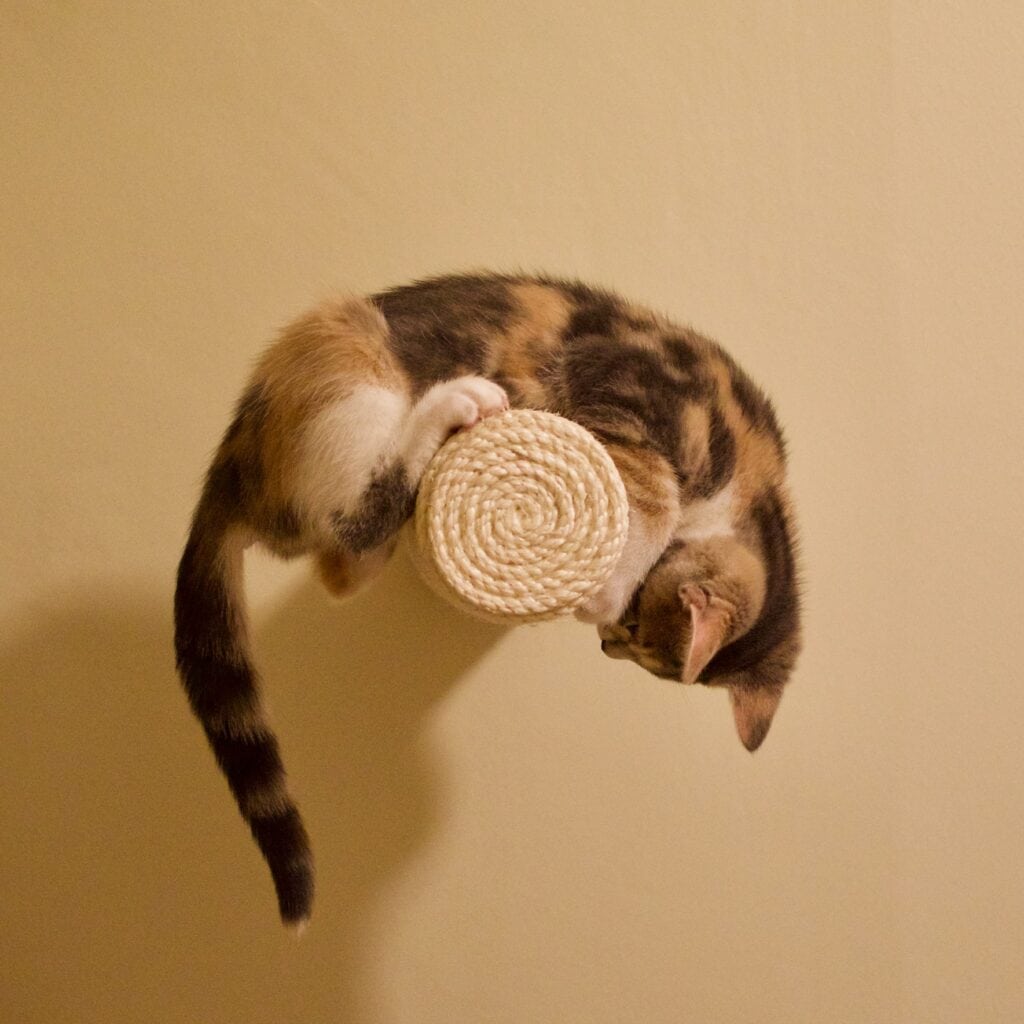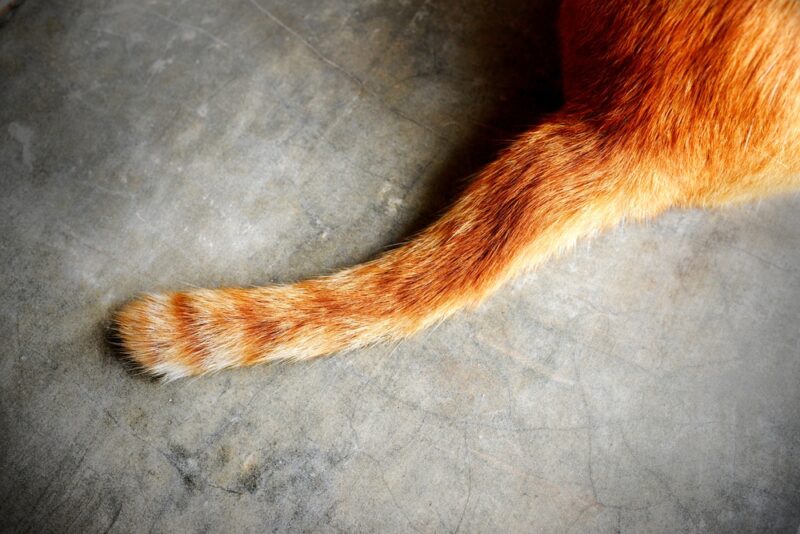A cat’s tail is a fascinating and finely tuned structure adapted for survival in the wild, and yes, they have bones. The tail comprises around 10% of the cat’s total number of bones, and the vertebrae extend from the spine. Cat tails do a lot more than simply tell you when your furry friend is feeling ticked off, and in this post, we’ll share the basics of cat tail anatomy and some cool facts about how tails function.
Cat Tail Anatomy Basics
Cats’ tails are made up of a combination of bones, nerves, blood vessels, and muscles. The tail contains around 20 vertebrae, which are called caudal vertebrae. At the base of the tail, the vertebrae are at their largest, and they’re smaller along the length of the tail toward the tip.
The first of these vertebrae is connected to the sacrum (a backbone), and this connects the tail to the vertebrae in the lower back. In between the vertebrae are soft discs which allow for flexibility of movement.
The tail also contains caudofemoralis muscles which are connected to the vertebrae by tendons and ligaments. These allow your cat to move their tail up and down. Altogether, this complex structure of bones, nerves, muscles, and blood vessels helps your cat keep their balance, move more fluidly, and express a wide range of emotions.

5 Cat Tail Facts
If you’re curious about how your cat’s tail functions and the range of emotions it can express, here are some amazing cat tail facts.
1. Tail Injuries Can Be Very Serious
If a cat has a tail injury, this can result in nerve damage. Pulling on the tail, for example, can cause serious injury because it can tear the nerves coming off the spinal cord, and these nerves are also connected to the hind legs, anus, large intestine, and bladder.
This can lead to incontinence, loss of bowel control, and difficulties with the movement of the tail (which may flop downwards and drag) and hind legs. For this reason, it’s crucial to be careful around your cat’s tail and never leave small children unsupervised around them.

2. Cats’ Tails Help Them Balance
If you’ve ever spotted your cat effortlessly navigate a narrow fence and wondered how they manage it, it’s because their tail acts as a counterweight to help them stay upright. It also helps them run, jump, and make sharp turns without toppling over, which is important in the wild as it means cats can catch prey more effectively.
3. Tails May Mesmerize Prey
Before a cat pounces, they swish their tail, which is believed to be a method of mesmerizing prey, thereby making it easier to catch. This also triggers the prey to move if the cat is unable to see it, which helps the cat know where exactly to pounce.

4. Tails Are Tools of Communication
Your kitty may not be able to verbally tell you something, but pay attention to their tail, as cats use these to convey a wide range of emotions. For example, if your cat’s tail is thumping away on the ground and whipping back and forth, this indicates that they’re irritated or in attack mode, so you might want to back off.
Conversely, if the tail is held high and curved (a bit like a question mark), you can likely assume that Fluffy is in a happy or playful mood. However, if the tail is twitching at the end, your cat may be in a playful mood, but they could just as well be agitated or annoyed. Wrapping the tail around you is a way of greeting you or asking for some caresses or cuddles.
5. Cats Can Learn to Balance Without Tails
Some cats, like Manx cats, are born tailless, and some undergo amputation due to an injury. Cats born without tails don’t have any issues with balance, and those that lose their tails later in life will likely have some problems with balance and movement at first, but as they heal, they should start to adapt to life without a tail.
Final Thoughts
To recap, cats certainly do have bones in their tails. Tails are truly intriguing parts of a cat’s anatomy that serve a great number of purposes in terms of survival and communication. Damage to a cat’s tail can affect other areas of their body and cause some serious issues, so be sure to take special care of your kitty’s behind! If you suspect that your cat is suffering from a tail injury, please see your vet.
Featured Image Credit: italay, Shutterstock










